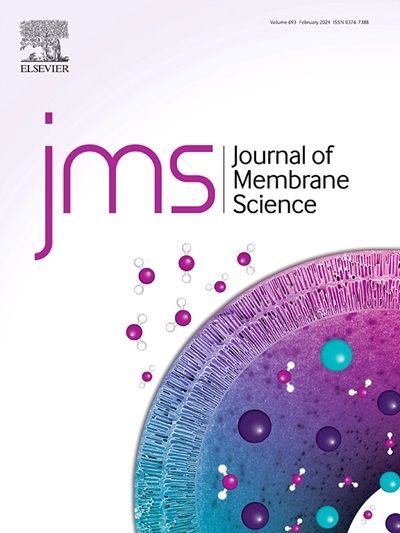Anchored highly stable Fe–Mn bimetallic catalyst in Al2O3 ceramic membranes for boosting Oxone activation and efficient degradation of emerging micropollutants
IF 8.4
1区 工程技术
Q1 ENGINEERING, CHEMICAL
引用次数: 0
Abstract
Catalytic membrane integrating membrane filtration and advanced oxidation in one single-step is promising in addressing emerging micropollutants issue in water, the challenges in catalytic activity and stability still limit their practical application. This study successfully anchored highly stable Fe–Mn bimetallic catalyst (FMBC) in Al2O3-based microfiltration and ultrafiltration ceramic membranes channel (named as FMBC@Al2O3-MF or UF) via a novel in situ fabrication strategy. Characterization results revealed that FMBC was anchored on the membrane channel wall of Al2O3-MF/UF, which enabled boosting Oxone activation to generate sulfate radical and hydroxyl radical at circumneutral pH (e.g., 7.0–9.0) and with great stability. Notably, FMBC@Al2O3-UF exhibited a remarkable activity and anti-interference capability in actual water matrices, which resulted in efficient degradation of emerging micropollutants such as carbamazepine, crotamiton, diethyltoluamide, gemfibrozil and ibuprofen in lake water and municipal wastewater treatment plant secondary effluent at environmentally relevant concentrations. Moreover, FMBC@Al2O3-MF/UF also displayed high cleaning efficiency toward natural organic matter (NOM) and effluent organic matter (EfOM) fouling via Oxone activation. Besides, the intermediates of carbamazepine degradation were identified, and most of them had decreased aquatic toxicity based on Ecological Structure Activity Relationship (ECOSAR) prediction. The high activity, stability and environmentally friendly property of the as-prepared FMBC@Al2O3-MF/UF make them promising application for advanced treatment of emerging micropollutants in water.

求助全文
约1分钟内获得全文
求助全文
来源期刊

Journal of Membrane Science
工程技术-高分子科学
CiteScore
17.10
自引率
17.90%
发文量
1031
审稿时长
2.5 months
期刊介绍:
The Journal of Membrane Science is a publication that focuses on membrane systems and is aimed at academic and industrial chemists, chemical engineers, materials scientists, and membranologists. It publishes original research and reviews on various aspects of membrane transport, membrane formation/structure, fouling, module/process design, and processes/applications. The journal primarily focuses on the structure, function, and performance of non-biological membranes but also includes papers that relate to biological membranes. The Journal of Membrane Science publishes Full Text Papers, State-of-the-Art Reviews, Letters to the Editor, and Perspectives.
 求助内容:
求助内容: 应助结果提醒方式:
应助结果提醒方式:


